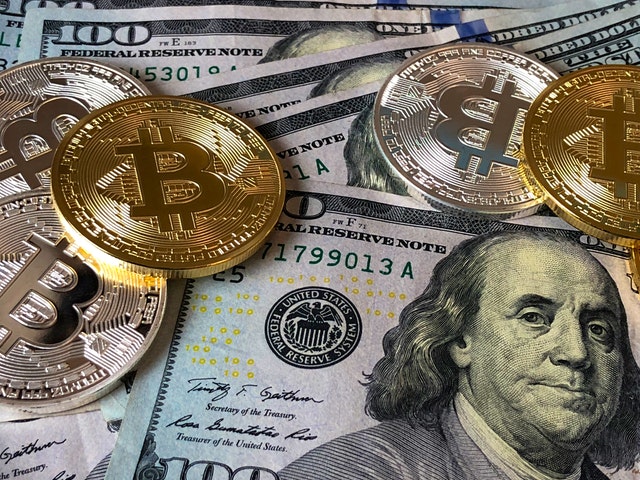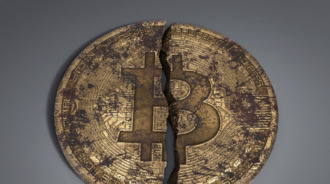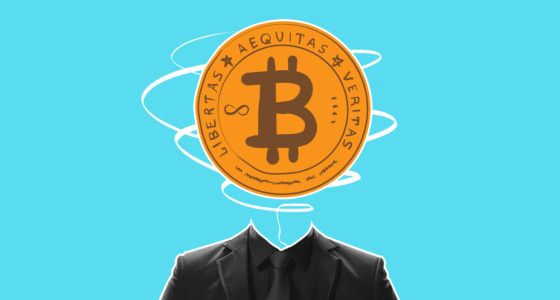

By now, humanity is almost used to the parallel existence of the fiat and crypto worlds – it has been over 14 years, after all. The word blockchain sounds familiar to many of us, the bitcoin rate is on the morning news, and every 10-year-old gamer wants to mine cryptocurrency for a living. Over 660 million bitcoin transactions have been conducted to date, so, clearly, we can’t simply write off this phenomenon due to its sheer scale.
But have we managed to figure out what cryptocurrency actually is? A brilliant startup, a successful scam or a secondary financial circuit that aspires to become the first? Humanity has yet to decide what place the blockchain occupies in its collective heart.
This uncertainty is at the core of the exciting and unpredictable journey called bitcoin price fluctuations. Its price seems to be pegged to the dramatic changes in the public attitude towards bitcoin.
The reasons for the incredible rise of the bitcoin in 2017 are still hotly debated. Everyone agrees on one thing, though – its scale was entirely unexpected.
So, what happened in 2017? We’ll never know – but we can try to recall how it all began. Actually, how and when it all began is a moot point. Just get used to it – with Bitcoin, everything is debatable.
Some say that the Phoenix project, which originally entered the picture at the 1947 Bretton Woods conference, became the first step towards creating a digital currency independent of government regulators. But let’s start with 1988…
The Rise of the Phoenix
In 1988, the Phoenix once again fluttered into the global economic landscape, making quite an entrance.
Every January, the global economic community engages in solving its favorite riddle – deciphering the cover of the fresh issue of The Economist. Its first 1988 cover featured a gold-colored coin against a Phoenix image and paper dollars at the bird’s feet engulfed in flames. The corresponding article refers to an unidentified independent global coin that could make the IMF obsolete.
This image was the first clear omen for the global economic community. It acknowledged the need for a fundamentally independent financial instrument capable of subverting the oppression of national and supranational central banks. Otherwise, this sign remained just a sign for many years. Up until 2007.
Nakamoto as a marketing trigger
The identity of the cryptocurrency creator is another controversial issue. All we know is that “in 2008, someone known as Satoshi Nakamoto…” Everything else remains foggy. Who and why was involved in the project? What was its ultimate goal? Nakamoto fell off the radar in 2011, leaving the most pressing question unanswered: when and where will Nakamoto’s 1.1 million bitcoins eventually surface?
There must be a reason for the odd modesty of a person who turned the world economy upside down. It may be a wish to live outside of the public eye, or a desire to have a secret weapon – it’s easiest for the creator to destroy his offspring by revealing its weaknesses or dumping his bitcoins on the market and causing a collapse. Whichever it is, the mystery and the rebellious image (painted by journalists later on) of the man who defied global centralization attracted people to bitcoin and cryptocurrencies in general. The figure of Satoshi Nakamoto himself was the best possible marketing strategy.
Marty Malmi, Bitcoin’s first official manager and a genius promoter found a brilliant argument in favor of cryptocurrencies. He deemed the collapse of Lehman Brothers, the largest investment bank in America, essential to the invention of bitcoin. What could be more convincing for popularizing an independent financial instrument? The choice between a bank that could go bust at any moment and an egalitarian distributed token that is not physically located anywhere seemed obvious.
2015-2017. Objective reasons for bitcoin growth

Bitcoin price fluctuations before 2016 can’t be considered significant (let’s skip the familiar anecdote of two pizzas). It was the period of accumulation – and the location of a sizeable amount of funds mined at that time is still largely unknown.
At the same time, 2016 is as crucial to the history of bitcoin as 2017, or maybe even more. That year humanity took a spontaneous but decisive step towards recognizing bitcoin as an alternative to fiat currencies. It all started in India, as part of the fight against corruption, when the circulation of the largest denominations of 500 and 1000 rupees was suddenly prohibited, with only 50 days and tight quotas to exchange the old currency notes. The huge Indian population rushed to embrace bitcoin because the government basically left them no other choice.
It was a spontaneous financial experiment that demonstrated the power and versatility of the new economic instrument to the whole world. One of the important results was the tokenization of ICO – the recognition of blockchain as a liquid financial instrument.
So, by the end of 2016, most crypto experts agreed – Bitcoin will surge in 2017. The most ambitious forecasts predicted a rise to $1,500. No one could imagine the actual scale of the event…

It’s 2017. Buckle up
Bitcoin’s vertical rally started in late 2017. From $1,000 its price leaped to $20,000, sometimes showing incredible 40% weekly increases. The same period marked the beginning of mass digitalization of commercial projects – in 2017 alone, the number of ICOs doubled compared to 2016.
The economists who considered bitcoin a utopia just a year before and predicted a soap bubble effect, quickly “saw the light” and came up with a whole list of reasons for its fantastic growth:
- The global economy built around the dollar is going through a crisis, and a default is possible;
- Japan officially endorsed bitcoin as a means of payment;
- China eased its laws on cryptocurrency, allowing to load technical capacities;
- The first reduction in the commission for the development of a block and the simultaneous complication of the mining process led to an outflow of miners and then a BTC deficit;
- Bitcoin futures appeared in the US, confirming rumors about the future legalization of the crypto asset.
Tether at play
There is another version of bitcoin’s 2017 ascent that links it to the USDT, a stablecoin presumably fully backed by fiat dollars. However, experts believe (and in 2021 Tether has partly admitted it in court) that the actual assets backing the USDT are significantly smaller than claimed.
In 2018, finance professors John Griffin and Amin Shams published a detailed investigation of what they believed to be unscrupulous machinations leading up to the 2017 bitcoin miracle. They revealed a suspicious relationship between bitcoin and USDT, claiming that Tether was printing money and funneling it into BTC to inflate its price. Bitcoin prices dropped after the study was published, and did not bounce back after it was refuted, perhaps because many in the industry still believed that USDT had played some sort of a con trick.
In the end, it seems that the most presumably independent financial asset – the Bitcoin – is critically dependent on PR trends and general market sentiment, even in the presence of objective reasons. Significantly more so than any conservative and manipulated financial instrument.








